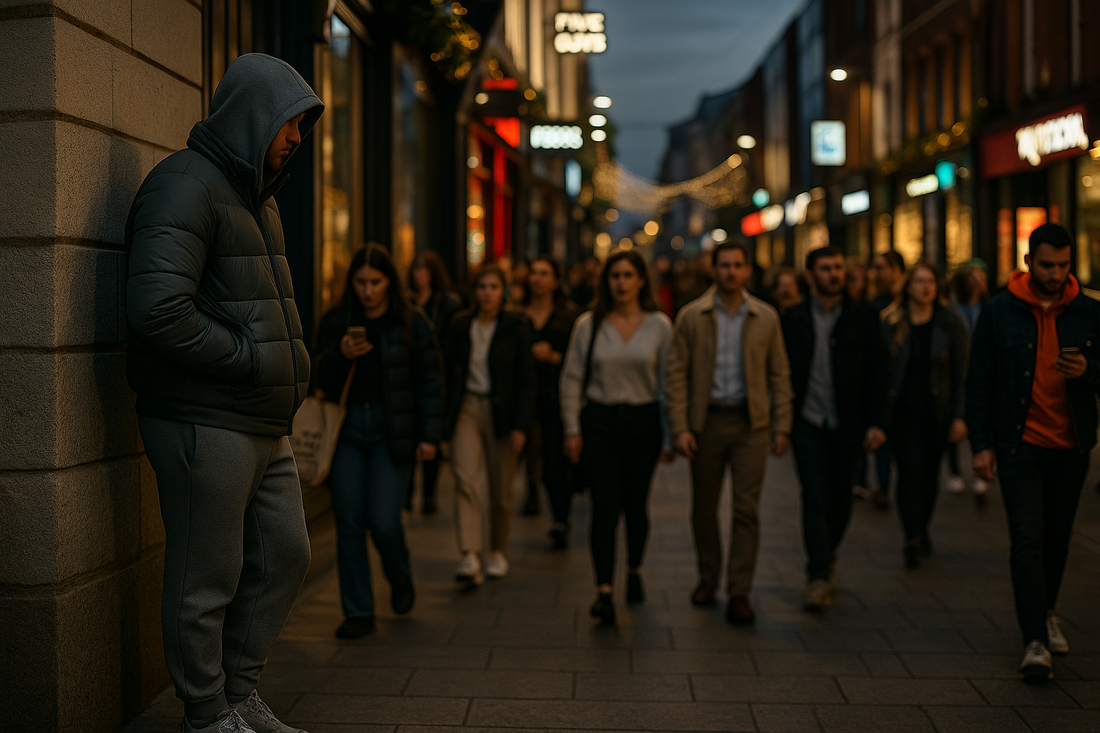
How Criminals Choose Their Victims - And How You Can Stay Off Their Radar
Share
How Criminals Choose Their Victims – And How You Can Stay Off Their Radar
Let’s be honest: talking about personal safety can feel uncomfortable. None of us want to imagine being targeted. But here’s the truth: just as police officers are trained to profile criminal behaviour and stay a step ahead, criminals are quietly “profiling” us in everyday life.
The good news? Once you understand how they think, you can flip the script. This is not about living in fear. It is about being alert, prepared, and making yourself a far less appealing target.
The "Crimes of Opportunity"
Most criminals are not masterminds, they are opportunists. They look for the easiest option, not the hardest fight.
Here is what makes someone more likely to be targeted:
- Unlocked doors and visible valuables – a handbag on the car seat, a phone on display.
- Low lighting – dark streets and car parks make it easier for criminals to hide.
- Distraction – scrolling on your phone, chatting loudly, or looking lost.
- Few witnesses – quiet areas are more appealing to criminals.
- Predictable routines – same route, same time, every day.
- Being alone – especially late at night.
👉 Study the illustration we have generated for this post, and see if you can spot the people who are most likely to get robbed.
Your Body Language Matters
It is not just about what you carry, it is how you carry yourself.
- The way you walk – Criminals study posture and movement. People who walk confidently, head up, shoulders back, are less likely to be targeted.
- Projecting confidence – Looking alert and purposeful signals you are not an easy target.
- Physical presence – Fitness and strength make you appear less vulnerable. Even just walking tall can work in your favour.
Criminals themselves admit it: confidence is one of the strongest deterrents.
What Makes Criminals Walk Away
In interviews with convicted criminals, here is what they said would make them stop an attack:
- The victim screams or yells.
- Someone calls emergency services.
- Witnesses show up.
- The victim appears trained or ready to fight back.
- The person looks confident, military, or physically strong.
- Not being alone.
In short, if you look like too much work or there is no clear escape route, most criminals will move on.
Practical Safety Tips for Ireland
Here are some simple steps to keep yourself safer, without paranoia:
✅ Stay situationally aware – Notice who is around, where the exits are, and what feels unusual.
✅ Lock doors and hide valuables – in your home, car, or workplace.
✅ Walk with purpose – Keep your head up and scan your surroundings.
✅ Maintain fitness if you can – not about appearance, but resilience and presence.
✅ Make noise if threatened – A loud scream can be enough to scare someone off.
✅ Carry legal, non-violent tools – Personal alarms or Farb-Gel that are allowed in Ireland and can be highly effective. (Keep them readily available when walking, not buried in your bag and forgotten.)
✅ Protect yourself, not possessions – If someone just wants your wallet or bag, let it go. You are more valuable than things.
✅ Avoid showing valuables – Do not flash cash, phones, or jewellery in public.
One Move Practised Well
Bruce Lee famously said: “I fear not the man who has practised 10,000 kicks once, but I fear the man who has practised one kick 10,000 times.”
What does this mean for us? It is not about knowing hundreds of techniques, it is about mastering one action that you can rely on under stress. For those training in martial arts, that could mean learning a single strike or defence move very well. For the rest of us, it could be something as simple as practising how quickly you can draw and activate your Personal Alarm, and making sure it is always charged and ready to use.
Repetition builds confidence and muscle memory, which could make all the difference in a real situation.
Building a Safer Mindset
Practical tips and tools are important, but your mindset is the foundation of personal safety. At Fortfyr, we use the S.A.F.E. framework:
- S – Sense: Stay aware of your surroundings and notice what feels unusual. Awareness is your first and best line of defence.
- A – Assertiveness: Walk with purpose and project confidence. It signals you are not an easy target.
- F – Feel: Trust your instincts. If something feels wrong, it probably is. Act on it.
- E – Envision: Mentally rehearse “what if” scenarios so you have a plan and are less likely to freeze under pressure.
This framework helps you build habits that naturally make you less vulnerable and more prepared. If you would like to explore this idea in more detail, read our post Why Mindset is Your First and Most Important Self-Defence Skill.
Staying safe is not about fear. It is about empowerment. Small changes in awareness, body language, and preparation can make you a harder target and keep criminals looking elsewhere.
Knowledge is power, and in this case, it could be what keeps you, and the people you love, safe.
Stay alert. Stay confident. Stay safe.
